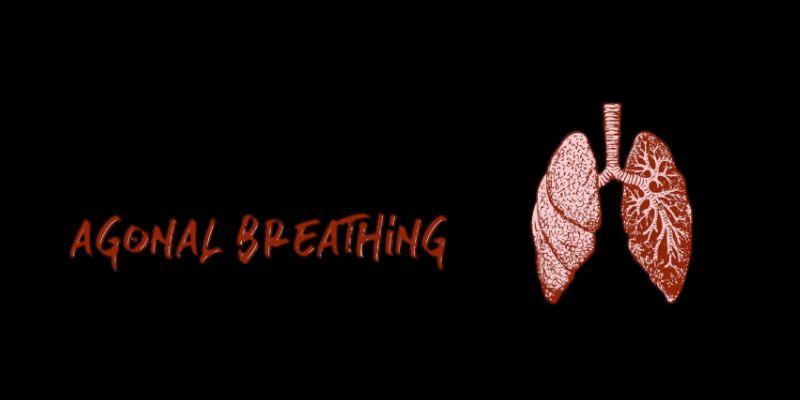Agonal breathing is a sign of a medical emergency. It typically occurs just before cardiac arrest. Although oxygen isn’t reaching the brain, the gasping may sound like normal breathing. These gasps are ineffective and do not deliver oxygen. Recognizing these signs quickly can save a life. Agonal breathing often follows cardiac or respiratory failure. Anyone nearby should call emergency services immediately. If the person is unresponsive, begin CPR without delay.
Medical professionals classify this type of breathing as a critical emergency. Acting quickly is essential to protect brain function. In emergencies, recognizing agonal breathing can make a crucial difference. The breathing may sound like choking or be irregular and gasping—every second counts during these episodes. Learning how to respond to agonal breathing can improve outcomes. Understand what causes these gasping episodes—and how to act quickly.

Understanding the Nature of Agonal Breathing
Agonal breathing is not the same as normal breathing. It often resembles choking or gasping, with short, irregular bursts that do not provide enough oxygen to the brain. As brain function declines, the body begins to shut down. This breathing pattern typically indicates severe distress and is often a sign of impending cardiac arrest. The breathing is slow, shallow, and frequently noisy. Some individuals may also experience twitching or involuntary movements. Agonal gasping is usually irregular and lacks a consistent pattern. The face may turn pale, grayish, or bluish due to oxygen deprivation. Breathing may stop entirely within moments.
Agonal breathing is often mistaken for signs of recovery, but this misunderstanding can delay life-saving treatment. Medical professionals are trained to recognize it and respond immediately with emergency care. Understanding the signs of agonal breathing is essential, as it signals a severe medical emergency. Immediate medical help and CPR are crucial for survival, and delays in response reduce the chances of recovery.
Causes of Agonal Breathing Episodes
Several serious conditions can lead to agonal breathing. The most common cause is cardiac arrest, during which the heart stops pumping blood, preventing oxygen from reaching the brain. Without oxygen, brain function rapidly deteriorates. Agonal gasping can also occur during a stroke, when blood flow to the brain is disrupted. Overdoses of substances that depress breathing can also trigger agonal breathing. Severely low oxygen levels and severe physical trauma, such as head injuries or major blood loss, may impair the brain’s control of breathing.
Direct brain damage or certain neurological disorders may also cause gasping episodes that resemble agonal breathing. In these cases, breathing often becomes shallow, labored, or noisy. Each of these situations demands immediate emergency intervention. Recognizing the causes of agonal breathing can support faster diagnosis and more effective treatment. Informed care depends on identifying the underlying cause. Delaying action is never safe. Agonal breathing should always be treated as a critical warning sign.
Symptoms and Warning Signs to Recognize
Recognizing the symptoms is key to a prompt response. Breathing may sound noisy, irregular, or gasping, with long pauses between breaths. Gasping may seem strained or labored, and the breathing does not sound normal. The chest may not fully rise with each breath. The skin may appear pale, bluish, or gray. The person may be unresponsive or unconscious, and a sudden collapse may happen. The eyes may roll back or appear glazed. Snoring or gurgling sounds may be present, and twitching or involuntary jerking may also occur.
These signs can mislead bystanders into thinking the person is still breathing normally. However, these breaths are ineffective and do not provide oxygen, indicating severe brain distress or damage. Recognizing these symptoms can save lives. Prompt recognition greatly improves the chances of survival. Another critical warning sign is the lack of response to shaking or verbal stimuli. It should be treated as a medical emergency. Emergency help must be sought immediately.
What to Do in an Agonal Breathing Emergency
During an episode, rapid action is critical. First, check if the person is responsive. Speak loudly and firmly, and tap their shoulder. If there is no response, call emergency services immediately. Inform the dispatcher that the person may be experiencing agonal breathing. If you are trained, begin CPR immediately. Perform chest compressions in the center of the chest, pushing hard and fast. Do not wait for the person to start breathing normally. Use an automated external defibrillator (AED) if one is available. Continue CPR until emergency personnel arrive.
If you are not trained in rescue breaths, perform chest compressions only. Gasping is not normal breathing. Never assume the person is okay. Prompt action can restore blood circulation and help maintain oxygen flow to the brain. Continue CPR even if the gasping stops. During an agonal breathing emergency, every minute is vital. Paramedics will take over care upon arrival. Do not leave the person alone. Stay on the line with emergency dispatchers—they will guide you through every step.

Long-Term Effects and Medical Evaluation
A thorough examination is frequently necessary to survive agonal breathing. Physicians will look for the reason. First, heart problems are examined. A person who has survived a cardiac arrest might require medication. In certain situations, surgery may be necessary. Damage could result from a lack of oxygen. Imaging tests can identify that. It could impact movement, speech, or memory. Rehab could take several weeks. Sometimes oxygen therapy is required. Recovery is aided by mental health support.
Patients frequently experience fear or confusion after treatment. Care includes family education. Treatment is aided by understanding the causes of agonal breathing episodes. It is necessary to address future risks. Doctors will create a care plan. Reviewing emergency response is another option. Some patients require monitors or breathing machines. Follow-up appointments are crucial. Preventing recurrence is the aim. Survivors may benefit from support groups.
Conclusion:
Agonal breathing is not normal breathing. It often occurs just before cardiac arrest and signals a medical emergency. Loud, gasping breaths indicate that oxygen is not reaching the brain. Never ignore these symptoms. Prompt emergency action can save lives, and when such episodes begin, every second counts. You can be prepared to respond effectively by learning to recognize and act on agonal breathing. Identifying the causes of these episodes can help prevent them and improve outcomes. Staying alert and responding quickly protects both heart and brain function.












